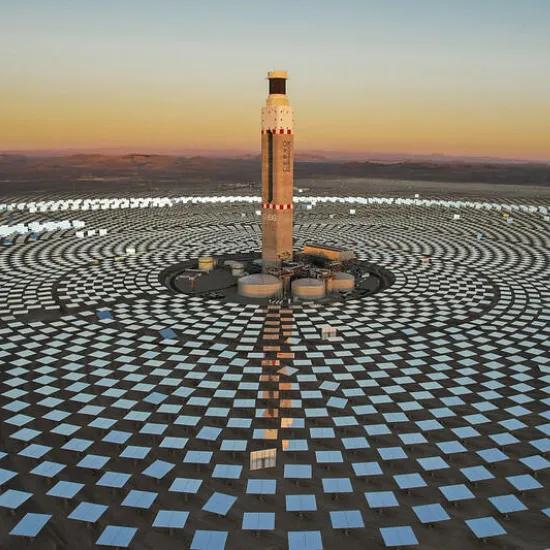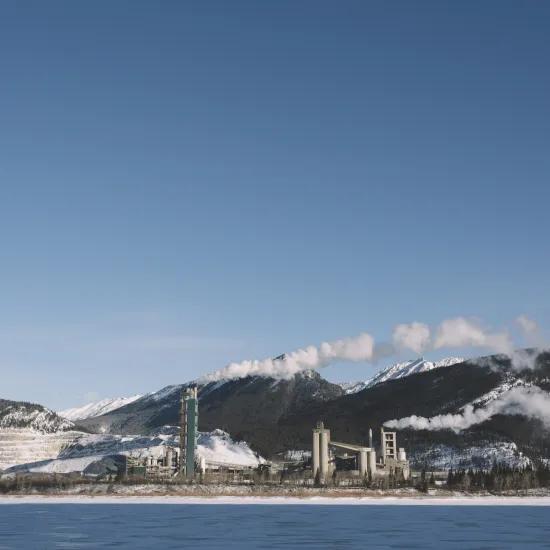Decarbonize heat and steam in your production processes
Thermal Energy Storage (TES) technologies are emerging as a game-changing solution to supply green carbon-neutral heat and balance energy supply & demand in intermittent conditions as the world accelerates its transition to renewable energy.
This article is co-authored with Giuseppe Casubolo - Director at Vola Alto Consulting
In an upcoming event on February 20, 2025 we'll showcase 8 fully operational industry cases. Join us as we explore how these technologies are ready to scale, drive cost savings, and make net-zero production achievable.
High TRL score
The industry gives thermal energy a Technology Readiness Score (TRL) of, on average, 7 to 9. Unlike many other green technologies, the technology doesn't need critical raw materials. The technology is ready, and the industry can benefit from the experience of implementing applications in the past decades, such as concentrated solar power (CSP) plants, cooling systems in chemical reactors, and others.
"It is widely understood that electrification of industrial processes is the most effective way to drastically reduce your carbon footprint."
What types of Thermal Energy Storage are there?
TES technologies are categorized into three main types.
- Sensible Heat Storage (SHS): Thermal energy is stored by increasing the temperature of a solid or liquid medium, such as water, rocks, sand, or molten salts. This technology has the longest proven track record, as it has been widely used in applications like solar thermal power plants (CSP).
- Latent Heat Storage (LHS): Phase change materials (PCMs) store energy at a nearly constant temperature. Although this concept is simple, systems based on this technology require specially designed materials and are still under development.
- Thermochemical Storage (TCS): reversible chemical reactions are used to store and release thermal energy. This method offers high energy densities, high efficiencies and long-term storage potential, making it attractive for seasonal energy storage. However, more R&D activities are needed to reach a commercial level.
How ready is the market?
TES technologies are designed to store thermal energy for later use. For example, when coupled with an electrical boiler, they can offer a complete solution to produce carbon-neutral (green) heat used in various industrial processes or district heating.
TES are also a very efficient and cost-effective solution to balance power supply & demand and improve overall energy utilization.
Industries, utilities, and policymakers are working to find solutions to integrate renewable energy sources, increase their share in the generation matrix, and reduce carbon footprints. TES systems are rapidly gaining traction. Despite the technology's high maturity level, the market readiness to implement it on a large scale varies depending on economic feasibility, policy support and infrastructure availability.
Market readiness factors
It is widely understood that electrification of industrial processes is the most effective way to reduce your carbon footprint drastically. About 50% of the final energy consumption is heat, which generates more than 25% of greenhouse gas emissions globally.
Complete carbon neutrality in the industrial sector can be achieved by transitioning from heat generation from fossil-fueled processes to electrical ones powered by renewable energy sources. Such a switch can only be made possible by implementing energy storage systems to address the intermittency of renewable energy sources.
"TES is the most effective and economical solution when heat (steam or other heat transfer fluids) is the final product."
Economic considerations, policy support, and infrastructure readiness play crucial roles in determining the adoption of TES. As technology advancements continue, TES will become an increasingly important component of a sustainable energy system, supporting grid stability, renewable energy integration, and energy efficiency improvements. Addressing current cost and scalability challenges will be key to unlocking the full potential of TES in the coming years.
Key factors influencing the market readiness
Technology Maturity and Commercialization
SHS systems have reached commercial viability, particularly molten salt storage in concentrated solar power (CSP) plants. LHS technologies are advancing with increased research on PCMs, yet scalability and cost remain to be proven. TCS is currently at the pilot and demonstration stage, requiring further development before widespread market penetration.
Economic Feasibility
TES can save costs by reducing energy demand peaks and improving overall efficiency. TES's levelized cost of heat (LCOH) depends on factors such as power costs (electricity needed to charge the system), material costs, system lifespan, and operational efficiency. TES can be competitive to the heat produced by natural gas when the entire benefits of participating in the power market are captured (intraday, capacity and balancing reserves, frequency restoration reserves…).
Policy and Regulatory Support
Governments worldwide are implementing policies to encourage energy storage adoption in general, including incentives, mandates for renewable integration and carbon neutrality. Carbon pricing and emissions reduction targets can further drive TES deployment by making conventional energy sources less competitive. However, the lack of standardized policies and regulatory frameworks slows market growth.
Infrastructure and Integration with Renewable Energy
TES is well-suited for integrating solar thermal and industrial waste heat recovery systems. The district heating and cooling infrastructure can also be enhanced with TES solutions to optimize energy use. Grid congestion and curtailments can be mitigated by TES as well as by other energy storage solutions. In conclusion, TES is the most effective and efficient solution when heat is the final product.
Future outlook
The future of TES technologies looks extremely promising, driven by improvements in system efficiency, advancements in materials used, cost reductions, and supportive policies. Thermal energy storage technologies are approaching market readiness at different rates, with sensible heat storage leading the way. Economic considerations, policy support, and infrastructure readiness are crucial in determining their adoption.
Many international experts expect phenomenal growth of TES in the following years. TES will become an increasingly important component of a sustainable energy system, reducing greenhouse gas emissions, supporting grid stability, renewable energy integration, and energy efficiency improvements. Addressing current cost and scalability challenges will be key to unlocking TES's full potential in the coming years.
Ready to feel the Thermal Storage heat?Join us on February 20th in Antwerp. |




